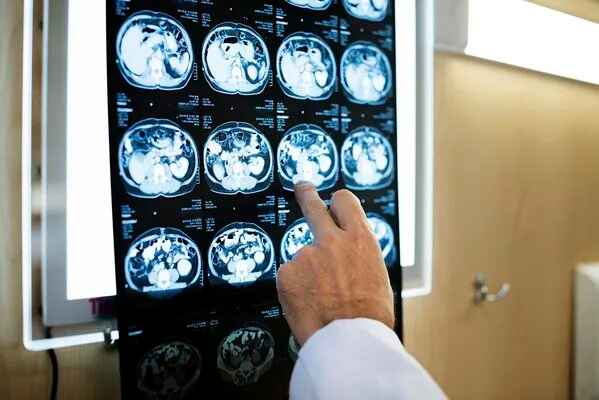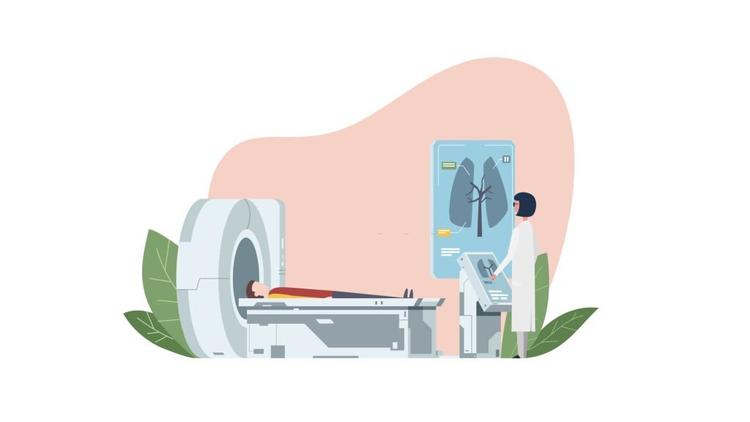CT Scan Vs MRI Scan: Choosing the right scan, uses and difference

Medically Reviewed By
Dr. Ragiinii Sharma
Written By Dr Divya Rohra
on Mar 23, 2022
Last Edit Made By Dr Divya Rohra
on Feb 26, 2025

Diagnostic interventions such as CT scans and MRI scans are popular techniques. But not many of us are aware about the similarities and differences in these techniques. Although both the techniques serve the similar purpose to obtain images of the internal body organs to understand the reason for the disease. These techniques aid the physicians in understanding the cause of the disease and decide the appropriate treatment strategies. Both the techniques help the physician to procure high quality images of internal body organs including the images of bones and joints.
The physicians recommend the use of CT scans or MRI scans in order to diagnose a number of medical and health conditions. CT scan and MRI scan differ with respect to the mechanism by which they produce the images. In the case of the CT scan, it uses the X-rays for scanning whereas an MRI scan uses the strength of magnetic energy fields and also the radio waves.
The significant difference between CT scans and MRI scans is that CT scans are widely recommended by the physicians as they are less expensive and cover larger body parts, but MRI scans are comparatively expensive but are used to obtain more detailed images of smaller parts.
CT Scan & MRI Specific Uses
It is observed that the CT scans and MRI scans help the physician to visualise the condition of internal body parts. It helps the physicians to study the images to diagnose any abnormalities which include fractures in the bones, joint related ailments, tumours in any region, or joint dislocation.
It is well known that many of the physicians or technicians refer to a CT scan as a CAT scan. The full form of CAT computerised axial tomography which is the technical name for CT scan. When a CT scan is performed, the patient lies down inside a large machine known as a CT scanner which radiates X-rays for imaging. There is a scanner integrated with the machine which sends the images to the computer.
MRI which is known as magnetic resonance imagery has magnetic strength and radio waves that are utilised for imaging purposes. This type of scan produces very detailed images for any specific body part. In case of an MRI scan the patient lies down inside the MRI scanner,after which the machine generates a uniform magnetic field and also the radio waves which repels the water and fat tissues in the body. After thorough scanning the scanner sends the image files to the integrated computer.
Physician Recommends CT Scan for following conditions,
- Abnormalities in any body part
- Tendon structures or bone fractures
- Any sites for internal bleeding
- Response for cancer treatment
Physician Recommends MRI scans for following conditions
- To diagnose specific problems related to with,
- Chest
- Neck
- brain
- Cardiovascular diseases
- joints
- Specific regions in bones
- Arteries and veins
Procedure for CT Scan and MRI Scan
The patient is requested to lie down in a sleeping position for a CT scan or an MRI. After the patient lies in the sleeping position then the scanner moves over the patient. The patients are requested to remain still and stable throughout the scan for better image generation. During the entire procedure, the technicians move to the adjacent room but provision is there for communication between the technician and the patient via intercom.
The CT scan machine obtains numerous X-ray images of the larger body parts. The images are obtained from different angles to procure clear insights. During the entire process the CT scan machine is not noisy as compared to the MRI machines. The MRI scan machines are relatively noisy , and the MRI technician always uses earplugs or any other hearing aid for protection against the noisy equipment.
Safety of the CT and MRI Scans
There are risks that are associated with the CT scans and MRI scans but the physicians recommend its limited usage which outweighs its benefits over the risks. Various studies have indicated that such interventions do pose risks but that can be overcome by shortening the duration of the scan. As per the physicians, the CT scan the patient receives meagre dose of radiation which is low enough to cause any harm
CT scans utilise the radiation, which do possess the ability to cause harm to the biological tissues. As per the guidelines provided by the authorities in the area of biomedical Imaging it is suggested that the risk of causing harm from the exposure to radiation is not significant.
It is a well-known fact that the X-ways are not considered to be safe in the case of pregnant women. Also, the CT scan also is based on the X-ray technique so physicians do not suggest CT scan during pregnancy. In such cases the physicians suggest MRI scans instead of CT scans. Also ultrasound is a preferred method for investigation. Moreover, the physicians try to avoid even MRI scans, during pregnancy as a precaution.
As discussed earlier the MRI scans are devoid of any radiation. They consist of strong magnetic fields and radio waves. In such cases the patients are interrogated for any kind of medical implant in their body which includes pacemaker or any cochlear related implants.
MRI scans are difficult for patients suffering from claustrophobia. But nowadays open MRI scanners are available and patients with phobias can easily undergo the scan.
In case of CT scans and MRI scans, the physician suggests utilising a contrast dye. This is done to make the images look better and clearer. But care must be taken if the patients are prone to reactions or allergies for the dyes.
CT Scan or MRI Scan
It depends on the recommendation of the physician as he is aware about the images required for diagnosing. The core objective of using MRI and CT scans is the same.
Conclusion
The two different scans that are important in diagnostics are CT scans and MRI scans. These scans help in order to have an imaging for the internal body parts for accurate diagnosis of the disease. Although both the techniques have similar usage they have different mechanisms for image production and scan. The technology that the CT scans have is imaging using X-rays whereas the MRI scan utilises the magnetic power along with the radio waves for image capturing.
The physician recommends a CT scan when the body area to be scanned is large, whereas a physician suggests MRI scan when the motive is to obtain details of smaller part upto tissue level. CT scans and MRI scans are both equally risk-bearing procedures but the benefits outweigh the risks and provide an accurate diagnosis for the diseases. So, depending upon the requirement of the intervention for diagnosis the physician recommends the suitable scan.
Leave a comment
1 Comments
Mark Hamlin
Nov 1, 2022 at 2:50 PM.
Great read!! Thanks for sharing such a great blog, blog like these is really helpful.
Myhealth Team
Nov 3, 2022 at 6:49 AM.
Thank you Mark for your appreciation. We would keep coming up with more useful content like these. In the meantime please feel free to visit our health community to find more content like these https://redcliffelabs.com/health-community/.

